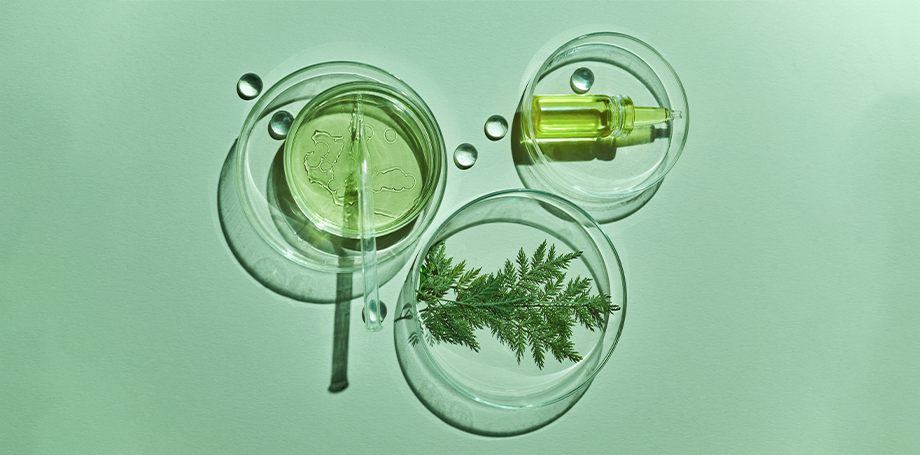Eco-design in the beauty industry
13
Jan

The world is becoming more aware of the damage that chemicals are doing to the environment and people. This has led to a rise in eco-friendly cosmetics. They are made from natural ingredients and do not contain any harsh chemicals. Furthermore, they are also vegan, meaning that they do not contain animal products or byproducts.
The production process for these products is also environmentally friendly, making them an excellent choice for those who want to be kinder to the environment. Moreover, the cosmetics industry is not all about beauty - it is also about human rights. All these aspects are covered by the term eco-design.
What is eco-design?
The eco-trend, which is spreading to various industries, is strongly visible in the cosmetics industry. Eco-design is the whole perspective of integrating social, economic and environmental aspects into the production chain and life cycle of products.
The design can be applied to all stages of the production process, from the first concept to manufacturing. It also includes distribution, use and final disposal of the product. Environmental and social issues related to a product are systematically analysed through the four pillars of eco-design.
The environmental impact of a product is calculated by considering material inputs, energy and water, waste generated and greenhouse gas emissions. The economic impact is assessed by considering the costs of raw materials, energy and water, distribution and marketing, and profits made during production. Finally, in terms of social issues, this includes an assessment of the impact on working conditions in the countries where the product is produced.
Eco-design packaging
Eco-design packaging is a type of packaging that is environmentally friendly and sustainable.
The first step in designing eco-friendly packaging is to consider materials that are used in the production process. Eco-designers want to use materials that are biodegradable, reusable and recyclable.
When designing environmentally friendly packaging, the next step is to consider how the consumer will use the product. If the product will be used by one person at a time, then it may not be necessary to have as much individual packaging.
The third point is to evaluate how much waste will be created by the packaged product. It may not be necessary to package something if it creates too much waste or if there is no way for people to recycle it properly.
Finally, designers should make sure that their design does not discourage consumers from buying their products because of the difficulty of recycling or reusing the packaging at the end of its life.
Energy-saving production process
We are living in an era where sustainability is becoming more and more important. Consumers are starting to demand more sustainable products. Many companies have therefore started to look into what they can do to make their production processes more sustainable.
The current energy crisis and rising raw material costs are putting new pressures on personal care manufacturers, in addition to their existing efforts to meet global climate targets.
They are faced with the conflicting challenge of affording the increasing costs, while reducing CO₂ emissions and at the same time developing natural, sophisticated formulas. One way to achieve the sustainable goals is to switch to a cold process. The cold process formulas are made without using heat or water, which means they use less energy than the traditional formulas.
Learn more
Human Rights in the Beauty Industry
Beauty and personal care products are an integral part of our daily lives. We use them to improve our appearance and health, as well as to make us feel more confident. Yet, the production of these products is often linked to human rights violations. There are a number of ways that companies can address this issue. These include:
- Ensuring that their supply chains are free from child labour
- Ensuring that their suppliers do not use forced or slave labour
- Ensuring that they do not source raw materials from conflict zones
- Ensuring that they do not discriminate against workers on the basis of gender, race, ethnicity or religion
Sources:
1. https://www.ctpa.org.uk/sustainable-design-principles
2. Schäfer, M.; Löwer, M. Ecodesign—A Review of Reviews, Sustainability 2021
3. Saving energy and time concept, IMPAG, 2022
4. https://www.bsr.org/en/primers/human-rights-priorities-for-beauty-and-personal-care-sector

Joanna Strus
Product & Sales Manager
IMPAG is my first job after graduation. I am a biotechnologist. Did I always know that I would work in cosmetics industry? Probably not.. Starting as a Marketing & Sales Assistant, I had the opportunity to get to know the world of cosmetic raw materials step by step.
Currently, my sales activity is focused on producers of natural cosmetics. Personally, I am a huge fan of green cosmetics, so working with them is first of all a pleasure.


Comments are disabled for this post.